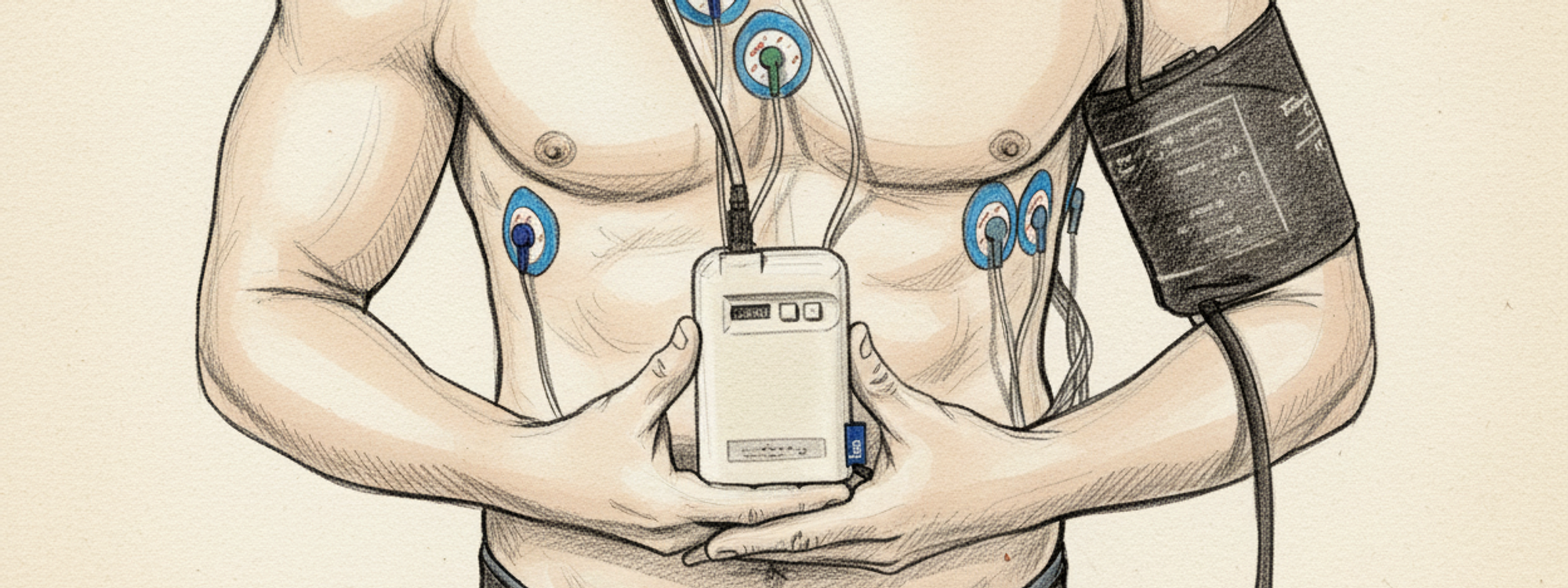
Cardiac Holter monitoring is a unique tool that provides a continuous assessment of the heart's electrical activity over an extended period of time. This portable electrocardiograph, also known as an ECG Holter or dynamic electrocardiogram, is primarily designed to identify sporadic and intermittent cardiac rhythm disturbances.
Before we delve into the specifics of Cardiac Holter, it's important to understand the basic electrocardiogram (ECG). The ECG is a diagnostic tool that graphically records and displays the rhythm and electrical activity of the heart. The heart's rhythm and electrical activity are captured by electrodes, which are connected to a computerized device known as an electrocardiograph. This test typically lasts a few minutes and is interpreted by a cardiologist.
The Cardiac Holter, on the other hand, is a specialized type of ECG that monitors heart function over a longer period, usually 24 to 48 hours. This is made possible through a portable, battery-operated electrocardiograph that allows for continuous monitoring.
The Cardiac Holter was developed to identify intermittent and sporadic alterations in the heart's electrical conduction that a basic ECG might miss due to timing constraints. As such, it is an ideal diagnostic tool for cardiac arrhythmias, which are characterized by irregular heart rhythms.
Cardiac arrhythmias can significantly alter the normal heart rhythm, causing it to become faster, slower, irregular, and/or of variable intensity. Some common types of arrhythmias include sinus tachycardia, sinus bradycardia, atrial fibrillation, atrial flutter, and ventricular fibrillation.
Besides identifying arrhythmias, Cardiac Holter is also used to evaluate the function of implanted cardiac devices like pacemakers or cardioverter defibrillators. It can also be used to assess the impact of pharmacological treatment on a heart condition.
Preparing for a Cardiac Holter test involves a few simple instructions. First, it's important to avoid removing the portable electrocardiograph throughout the test duration. This means abstaining from activities like bathing that could lead to its accidental removal.
Secondly, patients are encouraged to keep a diary, noting down any incidences of palpitations, chest pain, shortness of breath, or dizziness during the test. This can help in making a more accurate diagnosis.
Thirdly, patients should maintain their usual daily activities to prevent any distortions in the test results. Finally, it's advised to avoid close proximity to objects that emit magnetic or electric fields, even though there's no definitive scientific evidence that such objects interfere with the test.
The procedure involves the application of several electrodes at various points on the chest. These electrodes, which are connected to the portable electrocardiograph, record the heart's rhythm and electrical activity. The electrocardiograph is then stored in a comfortable shoulder bag provided to the patient.
The procedure consists of two phases: the recording phase and the graphic translation phase. During the recording phase, the portable electrocardiograph records and saves the patient's cardiac function. In the graphic translation phase, the recorded data is translated into an electrocardiographic tracing, which is then interpreted by a cardiologist.
Cardiac Holter monitoring is a safe and non-invasive procedure. The main risk is potential skin irritation from the removal of the electrodes. It's important to note that the electrodes do not emit electricity, so there's no risk of electric shocks.
The results of a Cardiac Holter test are usually available within a few days. The test is successful in capturing any cardiac rhythm disturbance that occurs during the examination period. Based on the results, the cardiologist determines the next steps, which could involve further diagnostic tests or the initiation of treatment.
In some cases, the results from a Cardiac Holter may not be sufficient for a definitive diagnosis. In such instances, the test may be repeated over a longer duration or at regular intervals.